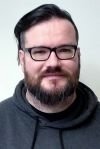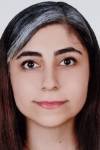
The BMBF-funded QuantumMiniLabs joint project is aimed at a lay audience, particularly high school students. Here, ACP is working to establish a broadly usable open-source ecosystem to raise awareness of second-generation quantum technology.
Workshop on the Open Modular Optics Toolkit in Jena, also in use for the Quantum Mini Labs.
Johannes Kretzschmar
Image: PrivateJohannes KRETZSCHMAR
CTO Lichtwerkstatt
Email: johannes.kretzschmar@uni-jena.de
Phone: +49 3641-9-47577
www.instagram.com/jkbeetleExternal link
Mina Afsharnia.
Image: PrivateMina AFSHARNIA
Project Associate QuantumMiniLabs
Email: mina.afsharnia@uni-jena.de
Phone: +49 3641-9-47549













